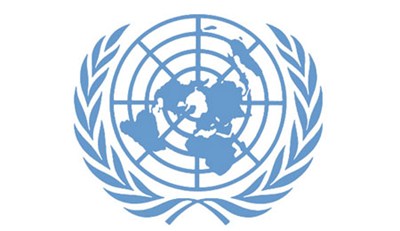
Two decades after the International Year of Volunteering 2001, the United Nations General Assembly requested the United Nations Volunteers program and the International Federation of the Red Cross and Red Crescent Societies (IFRC) to organize a Global Technical Meeting on “Reimagining Volunteering for the 2030 Agenda” in July 2020 as a milestone in the Plan of Action to Integrate Volunteering into the 2030 Agenda. A resulting associated paper, “Volunteering Practices in the Twenty-First Century,” revisits the 1999/2000 background paper “Volunteering and Social Development“. The new paper is available in Arabic, Chinese, English, French, Russian and Spanish.
I love the paper! Author Chris Millora, UNESCO Chair in Adult Literacy and Learning for Social Transformation at the University of East Anglia, United Kingdom, has done what I have begged volunteer management trainers and researchers to do since 2014: for the most part, HE DOESN’T SEPARATE ONLINE VOLUNTEERING FROM ONSITE VOLUNTEERING. Yes, the paper acknowledges that volunteering can happen onsite or online, but otherwise, people are just volunteers – not in the sense of merely but in the sense of solely. Virtual volunteering is completely incorporated into how volunteering is presented in Millora’s paper, rather than being talked about as something completely separate. For instance, in reviewing what the paper calls “the five categories of volunteering,” – Mutual aid or self-help, Philanthropy or service to others, Participation, Advocacy and Leisure, two examples are presented to illustrate “volunteer activities include various combinations and intensities of these elements,” and both of the examples include virtual volunteering elements – but neither example separates online volunteers as somehow completely different than traditional onsite volunteering (page 17). When this paper says
Volunteering is relevant throughout people’s lives and people may take part in multiple aspects at different times. Volunteering is both a means and an end to achieving, challenging, disrupting and even shaping development outcomes.
It means ALL volunteering – onsite, online, microtasks/episodic, high-impact, and on and on.
Remember why Susan Ellis and I called our book The Last Virtual Volunteering Guidebook? What we didn’t mean is that there will or should never be a further need to write or talk about the latest developments in engaging volunteers online. What we do mean is that we hope that talk about virtual volunteering stops being segregated to a separate book or separate chapter at the end of a book or report about volunteer management or volunteerism, that volunteers are just VOLUNTEERS, no matter where they do their service. Millora’s paper does that!
In the paper from 20 years ago, Volunteering and social development, by Justin Davis Smith, virtual volunteering is hinted at but never named. The only reference is when the paper notes that communication technology tools “open up new opportunities for voluntary activity” and “the spread of global information technology opens up new opportunities for home-based involvement in volunteering for groups, such as disabled people, who were previously excluded from participation” – both are references to virtual volunteering but without ever saying the term. It was so disappointing, because, at the time of this paper’s creation, the Virtual Volunteering Project had existed for three years and had already documented a few hundred programs engaging thousands of online volunteers, and the NetAid web site had been launched in September 1999 and involved UN Volunteers and UNDP. It’s so strange that none of this is mentioned. Very glad that the new paper is spot on in putting virtual volunteering in its rightful place within talk of volunteerism and its importance to the world.
As I have said over and over, virtual volunteering is more than 35 years old, it’s not new, it can no longer be considered innovative, and online volunteers don’t think of themselves online volunteers – they think of themselves as volunteers. There will still be presentations and trainings and books on different ways volunteers provide service and different aspects of volunteering engagement – group volunteering, micro-task/micro-volunteering/episodic volunteering, youth volunteering, accessibility, diversity, and, yes, virtual volunteering. And that’s how it should be. But in talks about volunteering and volunteerism, it’s so overdue to stop segregating virtual volunteering from onsite, traditional volunteering. Chris Millora gets it. Others?
Also see my video submission regarding the Global Technical Meeting on Reimagining Volunteering for the 2030 Agenda (it’s very short).

If you have benefited from this blog, my other blogs, or other parts of my web site and would like to support the time that went into researching information, developing material, preparing articles, updating pages, etc. (I receive no funding for this work), here is how you can help.
